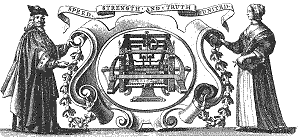
РЕЗОЛЮЦІЯ: Громадського обговорення навчальної програми статевого виховання
ЧОМУ ФОНД ОЛЕНИ ПІНЧУК І МОЗ УКРАЇНИ ПРОПАГУЮТЬ "СЕКСУАЛЬНІ УРОКИ"
ЕКЗИСТЕНЦІЙНО-ПСИХОЛОГІЧНІ ОСНОВИ ПОРУШЕННЯ СТАТЕВОЇ ІДЕНТИЧНОСТІ ПІДЛІТКІВ
Батьківський, громадянський рух в Україні закликає МОН зупинити тотальну сексуалізацію дітей і підлітків
Відкрите звернення Міністру освіти й науки України - Гриневич Лілії Михайлівні
Представництво українського жіноцтва в ООН: низький рівень культури спілкування в соціальних мережах
Гендерна антидискримінаційна експертиза може зробити нас моральними рабами
ЛІВИЙ МАРКСИЗМ У НОВИХ ПІДРУЧНИКАХ ДЛЯ ШКОЛЯРІВ
ВІДКРИТА ЗАЯВА на підтримку позиції Ганни Турчинової та права кожної людини на свободу думки, світогляду та вираження поглядів
- Гідрологія і Гідрометрія
- Господарське право
- Економіка будівництва
- Економіка природокористування
- Економічна теорія
- Земельне право
- Історія України
- Кримінально виконавче право
- Медична радіологія
- Методи аналізу
- Міжнародне приватне право
- Міжнародний маркетинг
- Основи екології
- Предмет Політологія
- Соціальне страхування
- Технічні засоби організації дорожнього руху
- Товарознавство продовольчих товарів
Тлумачний словник
Авто
Автоматизація
Архітектура
Астрономія
Аудит
Біологія
Будівництво
Бухгалтерія
Винахідництво
Виробництво
Військова справа
Генетика
Географія
Геологія
Господарство
Держава
Дім
Екологія
Економетрика
Економіка
Електроніка
Журналістика та ЗМІ
Зв'язок
Іноземні мови
Інформатика
Історія
Комп'ютери
Креслення
Кулінарія
Культура
Лексикологія
Література
Логіка
Маркетинг
Математика
Машинобудування
Медицина
Менеджмент
Метали і Зварювання
Механіка
Мистецтво
Музика
Населення
Освіта
Охорона безпеки життя
Охорона Праці
Педагогіка
Політика
Право
Програмування
Промисловість
Психологія
Радіо
Регилия
Соціологія
Спорт
Стандартизація
Технології
Торгівля
Туризм
Фізика
Фізіологія
Філософія
Фінанси
Хімія
Юриспунденкция
William Lee inventor of the Knitting Frame
In the popular folklore of the 19th century William Lee, a curate from Calverton, Nottinghamshire, was inspired to invent a knitting machine to win the affections of a young woman who was always too busy knitting to pay him attention.
 William Lee is pictured together with the object of his affections and a knitting frame on the coat of arms of the Worshipful Company of Frame-work-knitters.
William Lee is pictured together with the object of his affections and a knitting frame on the coat of arms of the Worshipful Company of Frame-work-knitters.
Unfortunately this romantic picture has little basis in fact. There is not even hard evidence that Lee was a clergyman or from Calverton. In reality little is known of the origins of the knitting machine/frame, but what the meager facts available do establish with some certainty is that it was indeed invented by a William Lee in the year 1589 or shortly afterwards.
William Lee is first mentioned as the inventor of the knitting frame in a partnership agreement between himself and a George Brooke on 6 June 1600. Lee was to provide the technology and Brooke the finance to produce the machine commercially. Brooke was to invest Ј500 in the project and the first Ј200 in profits were to go to Lee, all further profits would be shared between the two partners for a period of 22 years. Unfortunately events conspired against Lee when in 1603 Brooke was arrested on a charge of treason and executed.
Over the next ten years Lee continued to seek backing to develop his invention in London but with little apparent success. There has been much speculation as to the reasons for his failure: a knitting machine may have been seen as a challenge to the vested interests of the London weaving industry, Lee may lacked the required business acumen, or possibly converting his ideas into a practical machine was proving difficult.
Advisors to the Queen were also said to be unimpressed and questioned the quality of the product. Lee was refused a patent. Their rejection may have also been political, fearing the possibility social unrest following large numbers of hand knitters being added to an already growing pool of people without work.
In spite of the setbacks Lee remained convinced of the merits of his invention, and eventually moved his operation to Rouen in France where he found a more receptive audience. Lee was granted a patent by the King of France, and on 16 February 1612 signed a contract with a Pierre de Caux to provide knitting machines for the manufacture of silk and wool stockings. He also agreed to provide English operators for the machines and to train French apprentices. A manufacturing base for the production of knitting machines was also to be established in Rouen.
In its fully developed form the knitting frame could sow 600 stitches per minute using a hooked needle of a design, which has remained a key component of knitting machines to the present day.
The last known reference to Lee is in a 1615 French legal document, at this time he was still living in Rouen and is referred to as an English gentleman whose occupation was the knitting of stockings. Some accounts refer to Lee having a brother who travelled with him to France, and later after his death, returned to England to set up the first workshop in London using knitting frames to produce silk stockings for the wealthy.
The invention of the knitting frame was a remarkable achievement for its day and pre-dated the true industrial revolution by almost 200 years. By hand, it took two working days to knit a single stocking, but using a knitting frame this could achieved in one in one twelfth of the time.
Читайте також:
- Coloured stitch designs in weft knitting
- Computerized Knitting
- History of warp knitting
- I Listen to the text «Computerized Knitting». Decide if the statements are true or false. Correct the wrong statements
- INVENTORS AND INVENTIONS
- Joseph Mallord William Turner
- Knitting elements
- Knitting machines
- Knitting machines
- Knitting methods
- Principles of Machine Knitting
- Text B. Bearing Wall and Skeleton Frame
| <== попередня сторінка | | | наступна сторінка ==> |
| Computer graphics and pattern preparation | | | Glossary |
|
Не знайшли потрібну інформацію? Скористайтесь пошуком google: |
© studopedia.com.ua При використанні або копіюванні матеріалів пряме посилання на сайт обов'язкове. |